Not only a tribute to the art of Alphonse Mucha (IvanÄice, 1860 - Prague, 1939), but also an opportunity to reflect on an era characterized by a renewed interest in art, design and advertising and the remarkable ability that art has to unite people and communicate universal messages: these are the two major intents behind the exhibition running until April 7, 2024 at the Museo degli Innocenti in Florence, curated by Tomoko Sato with the collaboration of Francesca Villanti. Alphonse Mucha. The Seduction of Art Nouveau, this is the title of the exhibition, is an exhibition suitable for everyone, and aimed both at those who are already familiar with Mucha’s universe, or rather, Mucha’s Style, and those who, intrigued by his harmonious, floral and ornamental posters, approach his world for the first time. It is indeed an exhibition understandable to all, as indeed Mucha himself wished art in general to be. This is recalled by his grandson, John Mucha, current president of the Mucha Foundation, who wrote in the catalog to introduce the exhibition, “My grandfather yearned for a better world in which everyone, each with his or her own culture of origin, knew how to respect differences and live in peace and harmony-a message as relevant as ever in this troubled world. He was also passionately convinced that art was an essential gift to humankind, and therefore should be accessible to the general public, encouraging as many people as possible to admire and appreciate it. We hope, therefore, with this new exhibition, to continue in the groove he traced, and succeed in communicating with freshness to visitors-Tuscans and non-Tuscans alike-the interests, passions and convictions inherent in his artistic vision.” One travels pleasantly through the dedicated exhibition rooms, thanks in part to sober and often softly colored arrangements that do not bother the eye and thanks to an immersive corridor that suddenly catapults you among the flowers typical of the Czech artist’s style. The large posters of Mucha, considered the most famous exponent ofArt Nouveau, are often flanked along the exhibition route by drawings (Mucha was in fact also a great draughtsman), books, and photographs that immerse the visitor even more in the artist’s universe, his themes, and the intent of his art.
As Tomoko Sato, curator of the Mucha Foundation and curator of the exhibition at the Museo degli Innocenti, explains, at the core of Alphonse Mucha’s artistic philosophy is the concept of beauty: for him, beauty is a symbol of moral harmonies and possesses an intrinsic capacity for inspiration; the artist is therefore “a priest at the altar of beauty,” and his role is to communicate the message of beauty to a wider audience. He therefore feels closer to the concept of art for the people rather than art for art’s sake; to an art that was “cheap and affordable, which found a home among poor families as well as in wealthier circles,” and in advertising promoted the spread of aesthetics in artistic craftsmanship. And in determining which forms and lines were most pleasing, he suggested learning the law of balanced proportions from the organic structures of nature: “Visible nature, which we grasp through the eyes, surrounds us with rich and harmonious forms. The marvelous poetry of the human and animal bodies, and the music of lines and colors emanating from flowers, leaves and fruits, are the most obvious teachers to the eye and taste.”


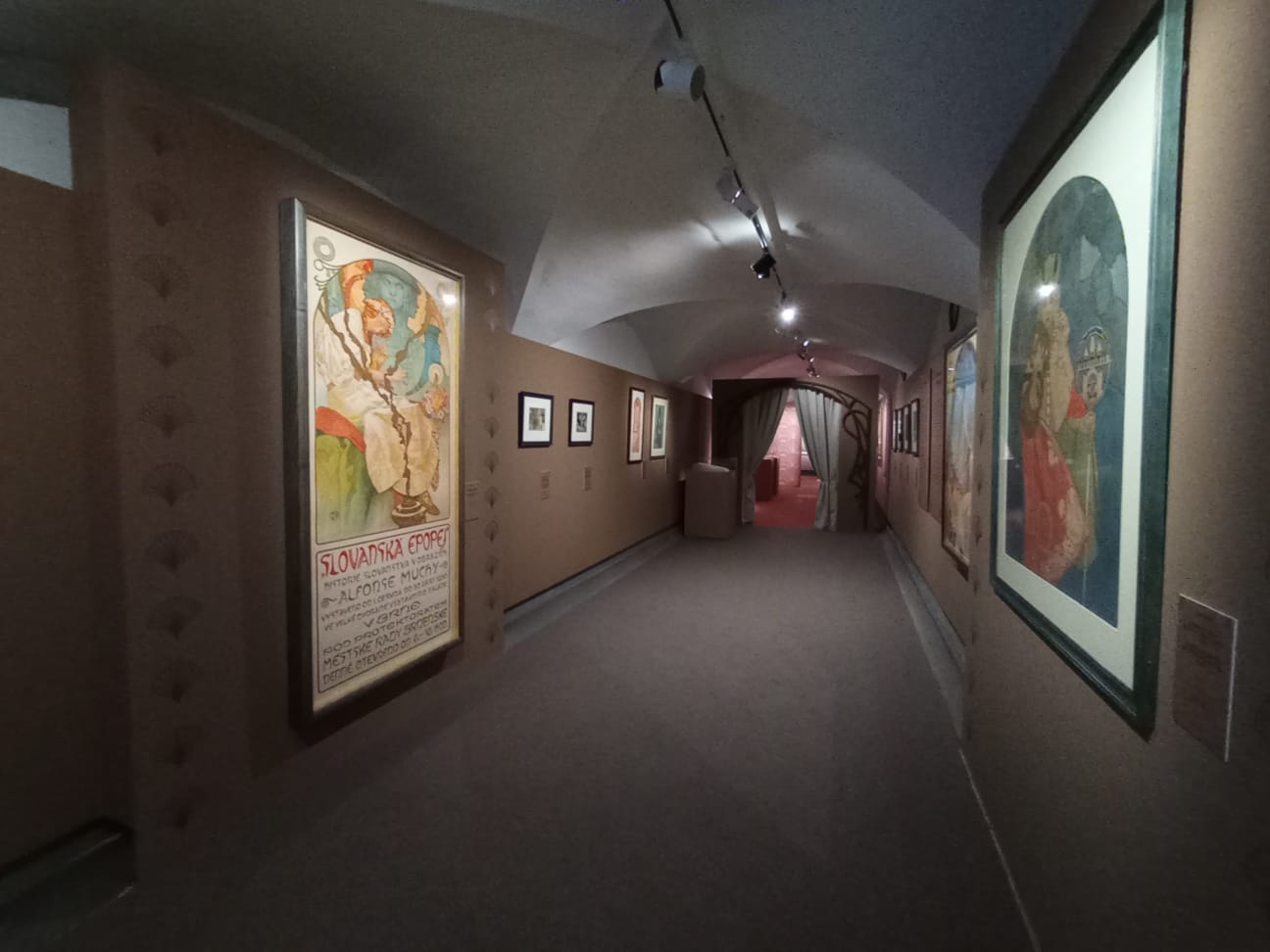
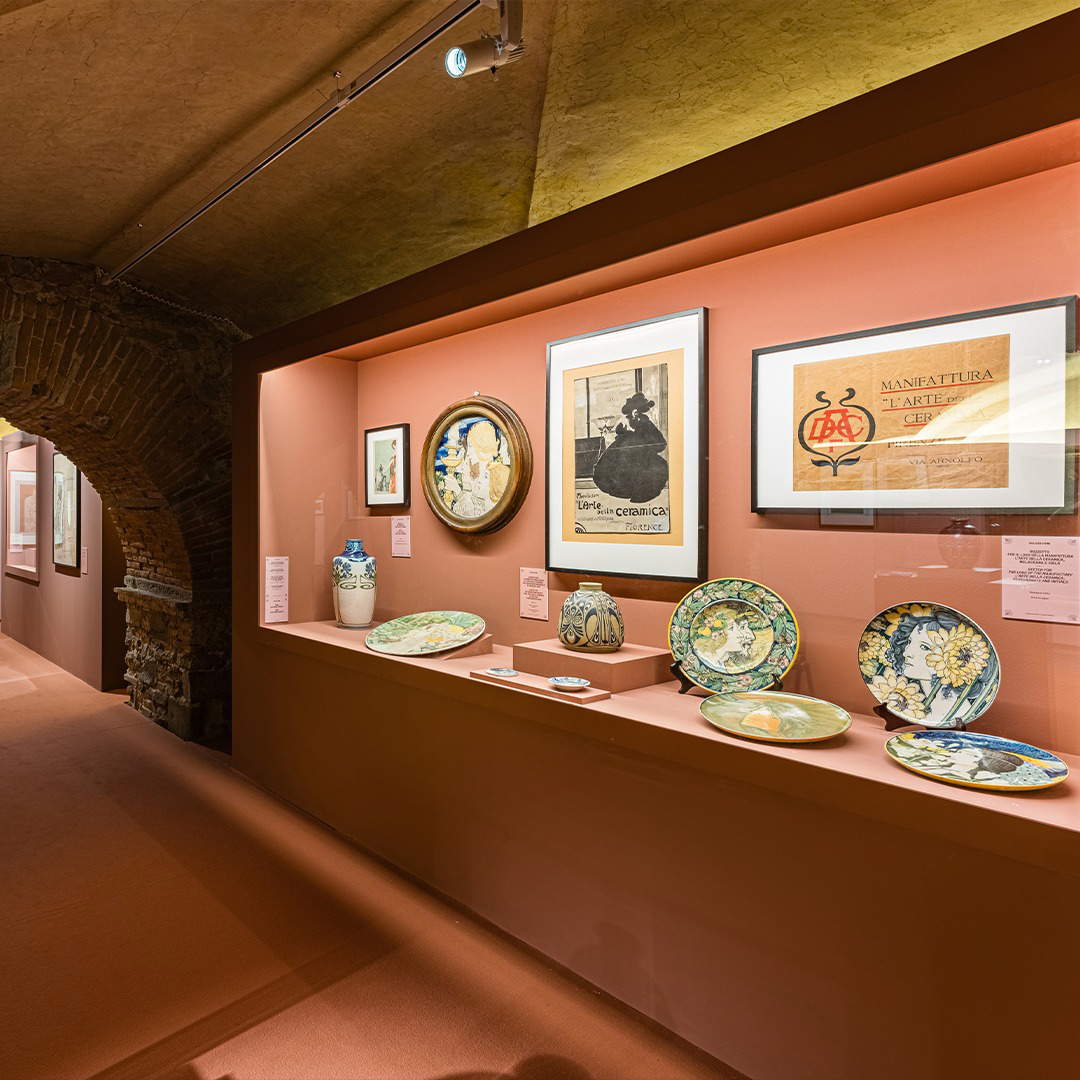
Walking through the rooms of the exhibition, therefore, one is surrounded by works that are always harmonious, in the pure Mucha Style, with graceful and elegant female figures framed by floral arrangements and decorative elements inspired by nature, or with female figures (women are always protagonists in Mucha’s art) lowered into billboards that are portraits of moments that are always happy, even in their everydayness. Particularly in the first and third sections. The exhibition immediately welcomes the visitor with the first section, titled Women, Icons and Muses, devoted precisely to women, whose grace and charm are central to Mucha’s production. Particular space is given to Sarah Bernhardt, the great Parisian actress, nicknamed the Divine, whom Alphonse Mucha met in late 1894 and whom she commissioned from him for a playbill for her staging of Gismonda (featured here in a large color lithograph). Mucha was a book illustrator at the time, but despite his inexperience, the playbill the artist made for her, unveiled in Paris on New Year’s Day 1895, was an immediate success, so much so that the Divine Sarah commissioned others for the stagings she curated: on display are those for La dame aux camélias, La Samaritaine, and Médée. Also present is the poster for the avant-garde magazine La Plume, which depicts Sarah Bernhardt as Princesse lointaine. Director of La Plume was poet Léon Deschamps, who also ran the exhibition hall called Salon des Cents: opened in 1894, this promoted the works of artists associated with the magazine; two years later, in 1896, Deschamps invited Mucha to enter this artistic context, and the latter, in gratitude, produced the poster for the Salon’s twentieth exhibition, as can be seen in the color lithograph on display, and the following year the Salon hosted an extensive retrospective devoted to the Czech artist, where Mucha exhibited nearly four hundred and fifty works.
The third section, on the other hand, is devoted to Advertising Posters: in fact, Mucha became the most sought-after graphic designer in turn-of-the-century Paris, so much so that in twenty years he produced about one hundred and twenty of them, in addition to the actual packaging. Very famous are those for Moët & Chandon champagne, but as can be seen in the exhibition he really made some for all kinds of products, from chocolate to cigarettes and beer, passing through baby food products (Nestlé), bicycles, cookies (Lefèvre-Utile), and perfumes (very particular is the Rodo spray perfume).
Drawings and photographs on display at this point tell of the artist’s use of photography, which becomes an important part of the creative process for him: in fact, he takes photographs of models in his studio, improvising the most diverse poses, which he then uses as sources of inspiration for drawings and paintings
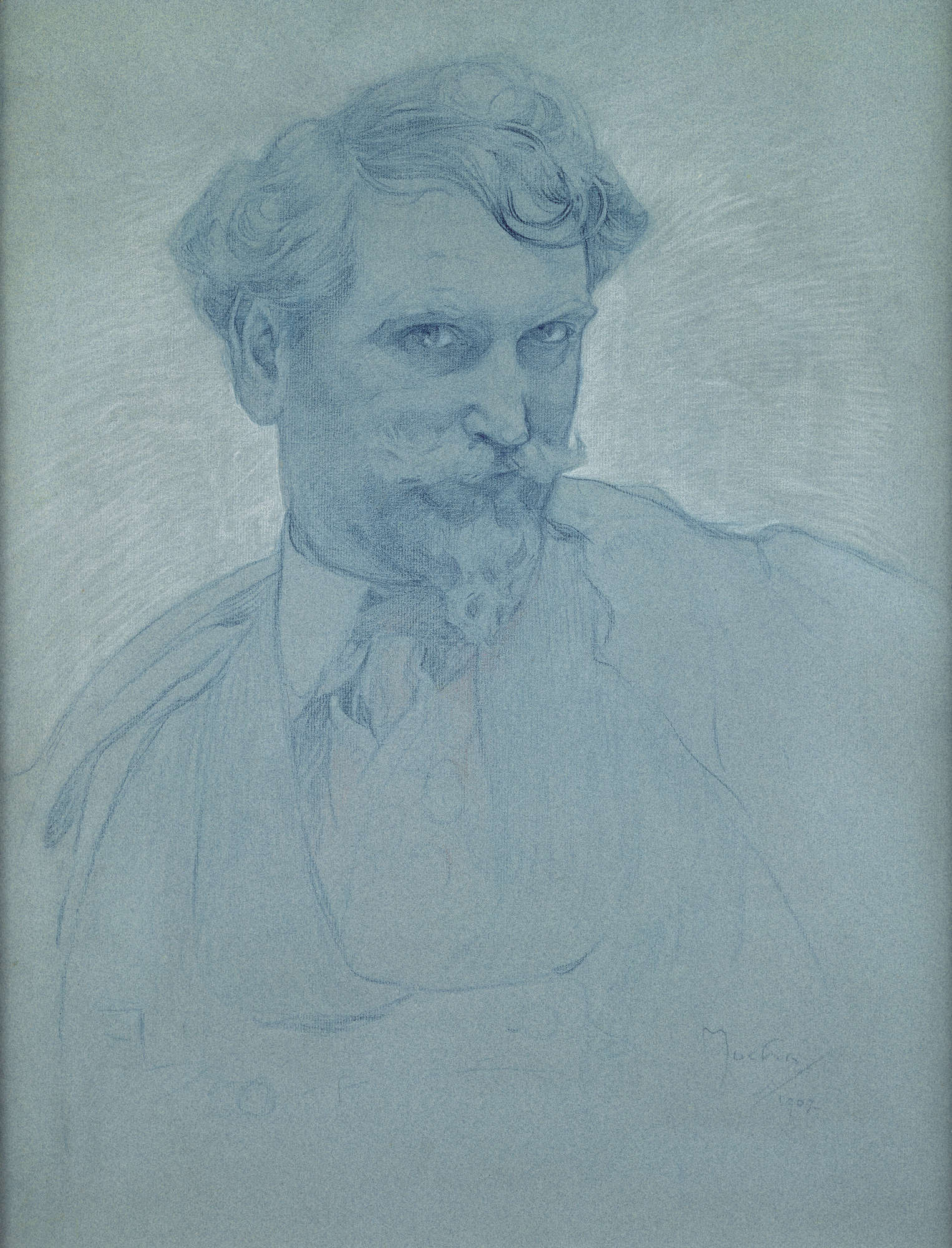
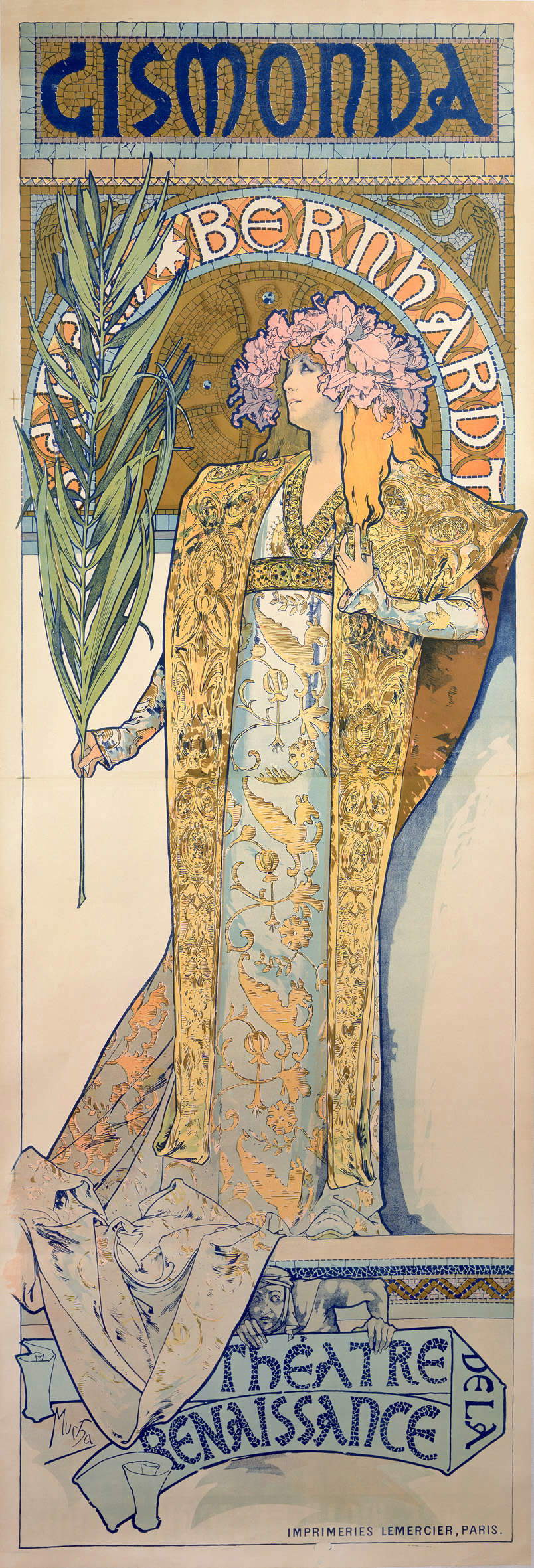
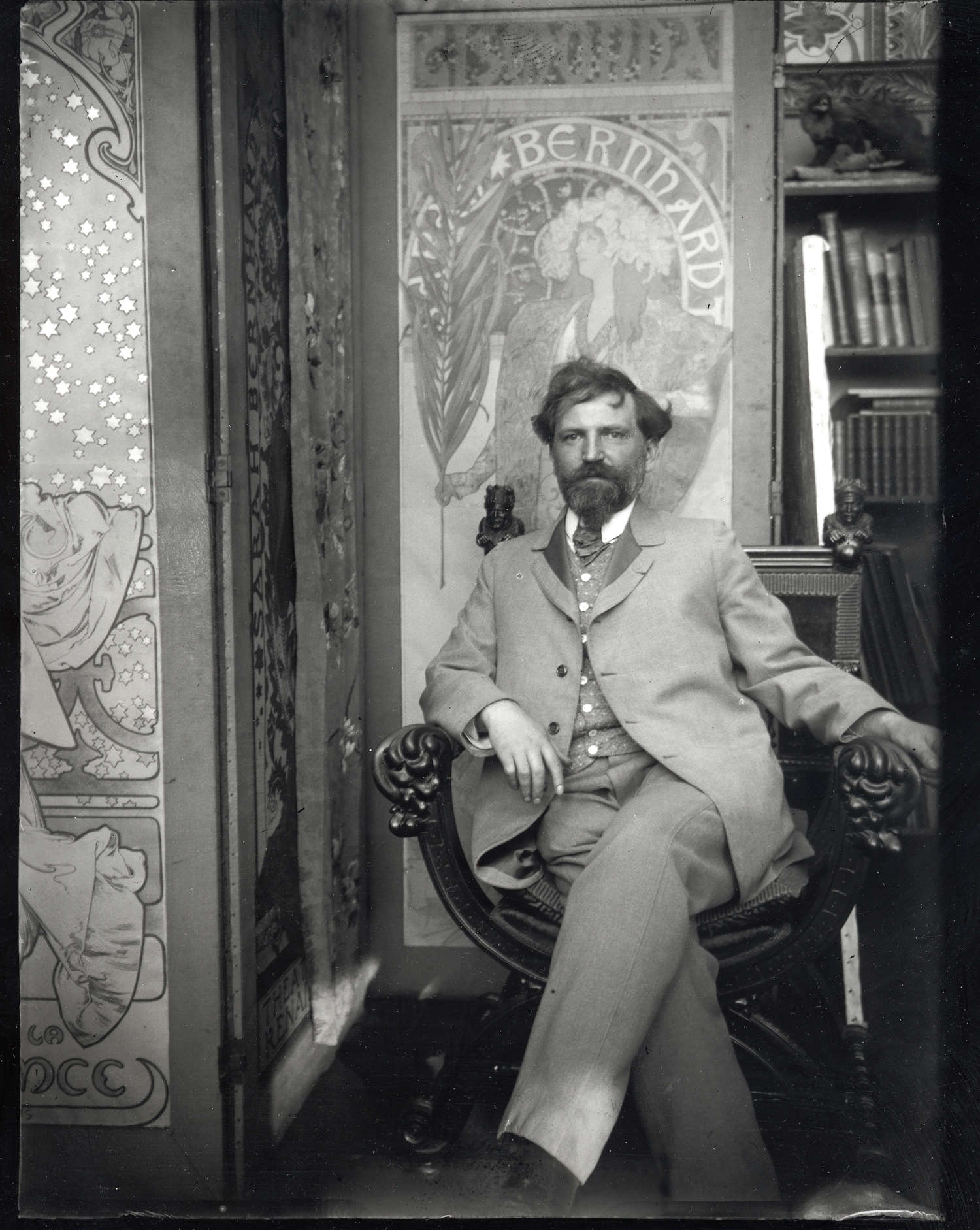
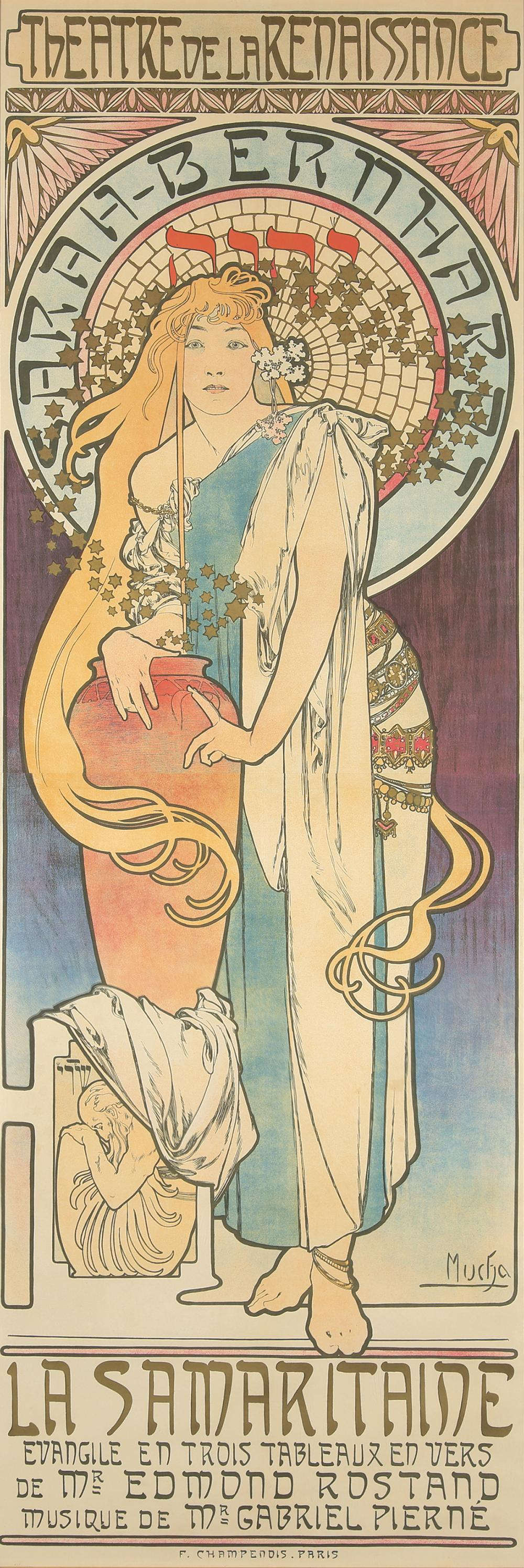
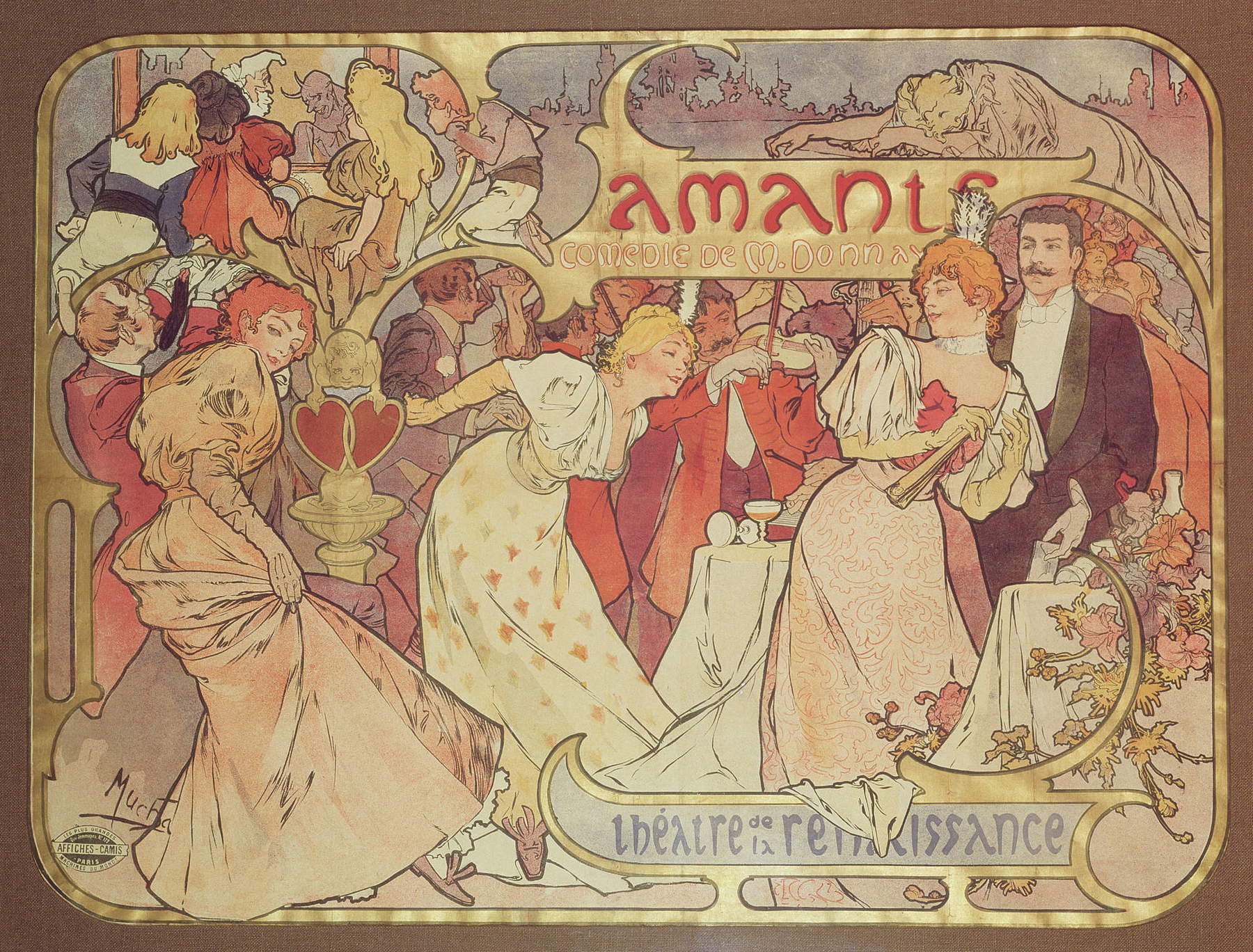

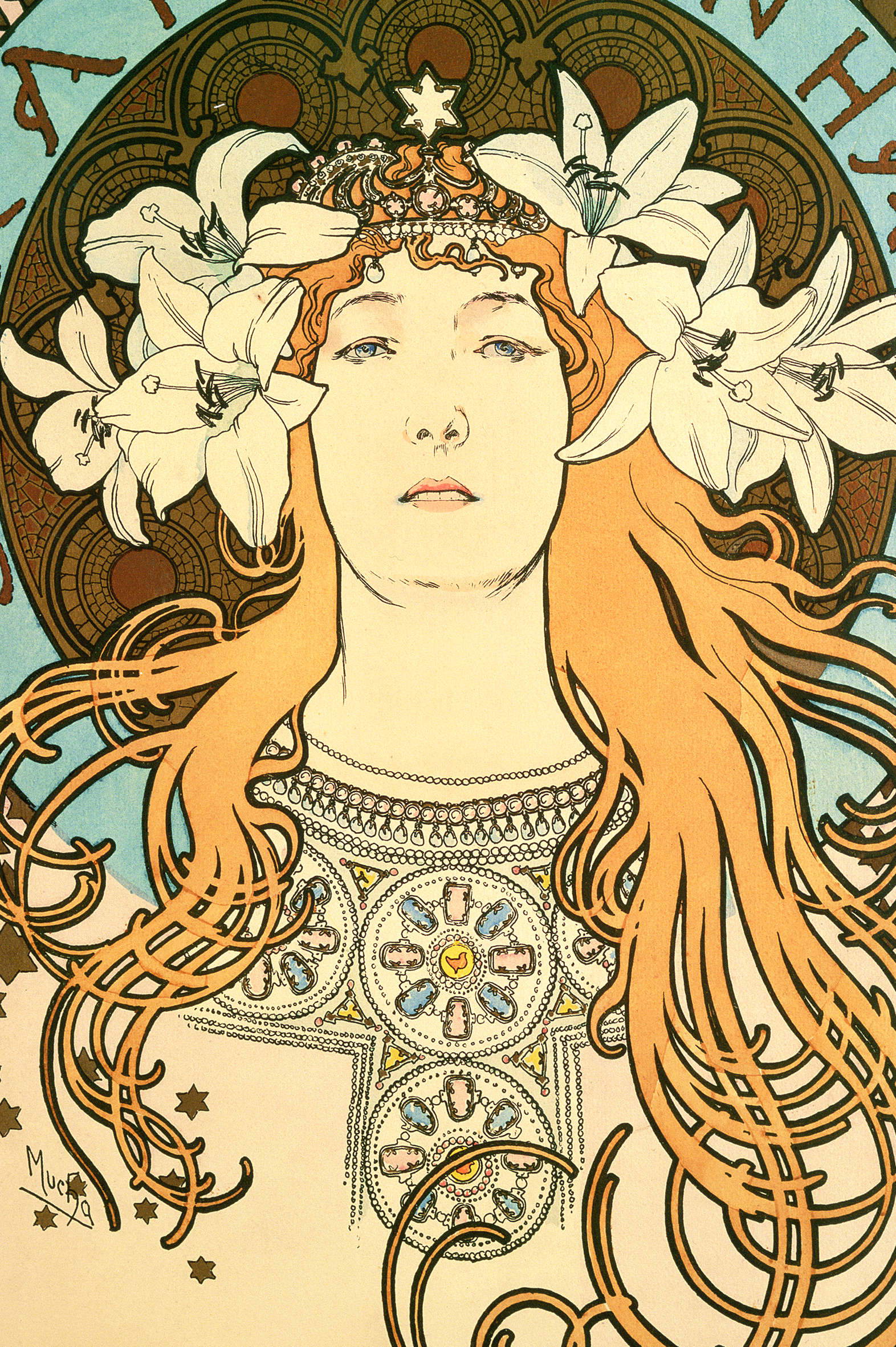

Between these two sections, the second focuses on Breton culture: the recent study done by Tomoko Sato in collaboration with Philippe Le Stum found an aesthetic and intellectual passion on Mucha’s part for Breton and Celtic culture, which he feels is akin to Czech folk culture. Indeed, the artist often depicts himself wearing the embroidered shirt of the national tradition, a symbol of Slavic unity. Mucha’s interest in Brittany presumably arose in Paris shortly after 1890, thanks to his meeting with artists of the Pont-Aven school, and in particular with Paul Gauguin, with whom he formed a friendship that would last until Gauguin’s departure for Tahiti. Resulting from these trips to Brittany are many sketches and photographs of landscapes, such as seascapes and rocky shorelines, and of local folk culture, as well as of figures in typical folk costumes (examples are the pair of decorative prints Heather of the Cliffs and Thistle of the Sands). In his works he then began to introduce ornamental motifs drawn from the Celtic tradition as a symbolic language expressing a specific cultural identity: thus we see Slavic-style clothing, floral and botanical motifs inspired by the Moravian tradition, and circular and geometric motifs reminiscent of Czech baroque aureoles and churches. Mucha’s works with their characteristic style spread everywhere, in the form of decorative prints, drawings, as well as calendars, postcards, and giftware, thanks in part to the fact that the artist favored depicting, always with a view to an art comprehensible to all and universal, themes such as the seasons or the hours of the day, personified by beautiful and graceful maidens surrounded by flowers and elements of nature. Examples in the exhibition include the Dewez store calendar with depictions of the seasons and the decorative figures Éveil du matin, Éclat du jour, Réverie du soir, and Repos de la nuit.
The exhibition continues in its fourth section with Mucha’s return to his homeland in 1910 with the aim of placing himself and his art at the service of the nation’s political freedom, and he does so by working for a full seventeen years (from 1911 to 1926) on the monumentalSlavic Epic project, made possible with the financial support of a wealthy businessman and philanthropist, Charles Richard Crane, whom Mucha met in the United States before his return home. TheSlavic Epic, a cycle of twenty paintings on very large canvases, is intended to invite the Slavic people to learn from history so that they can progress and achieve political independence, but also to suggest a future goal of maintaining peace between Slavs and the entire human race. Even in this monumental masterpiece, which Mucha and his patron officially presented in Prague in 1928, on the occasion of the tenth anniversary of the nation’s independence, the artist continued to develop his style: women, in traditional dress, become symbolic expressions of the nation’s soul, spiritual icons that inspire and unite the Slavic peoples. In addition to theSlavic Epic, which is featured in the exhibition only in a panoramic image depicting the cycle exhibited at the Clementinum in Prague and in a photo showing the artist at work on one of the canvases, Mucha also worked at home on public projects, such as decorating the interior of Prague City Hall, designing a stained-glass window for Prague’s St. Vitus Cathedral, and posters for the Panslavi gymnastic rallies of the Sokol movement in 1912 and 1926.
Le Style Mucha became synonymous with Art Nouveau in 1900 and influenced theParis International Exhibition that same year. The exhibition thus continues by presenting sketches and figures for promotional materials of the Exposition itself, but also projects as a Parisian exponent of Art Nouveau, such as his collaborations with the old perfumery Houbigant and with Georges Fouquet, among the most famous goldsmiths and jewelers in Paris, who commissioned him not only to design an entire collection of jewelry for the Exposition, but also to decorate the goldsmith’s new store on rue Royale: photographs testify to Mucha’s renovated store interior and facade along with drawings of the designs.
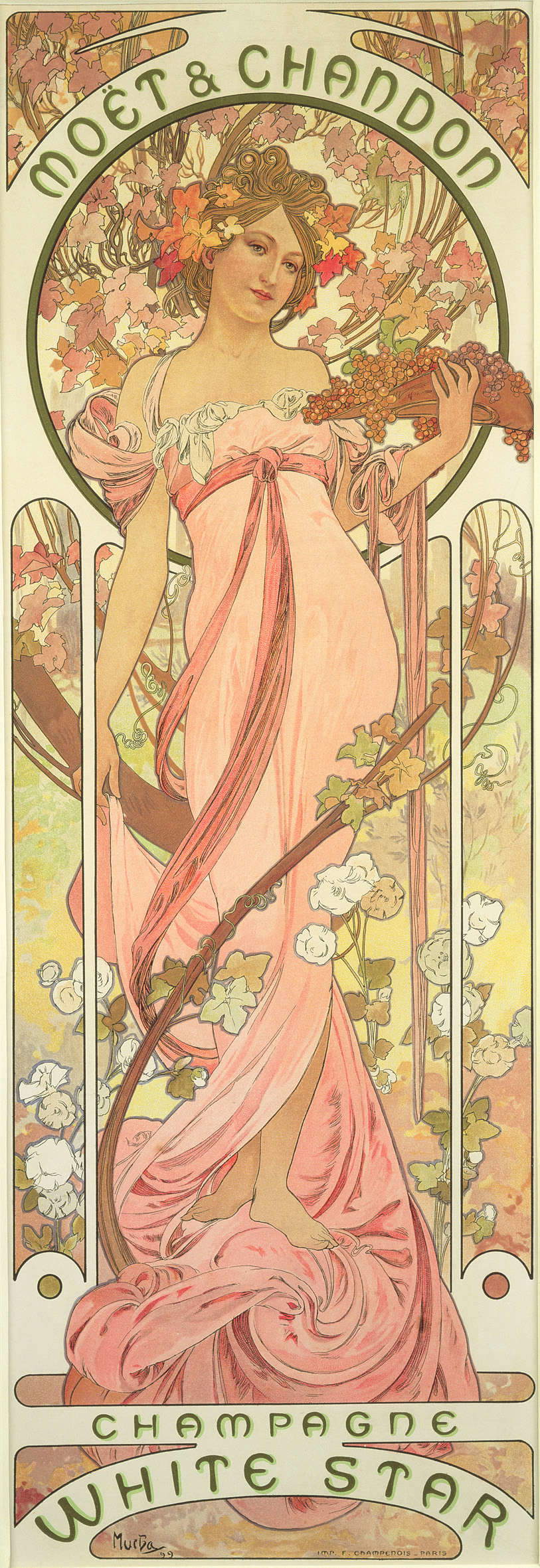
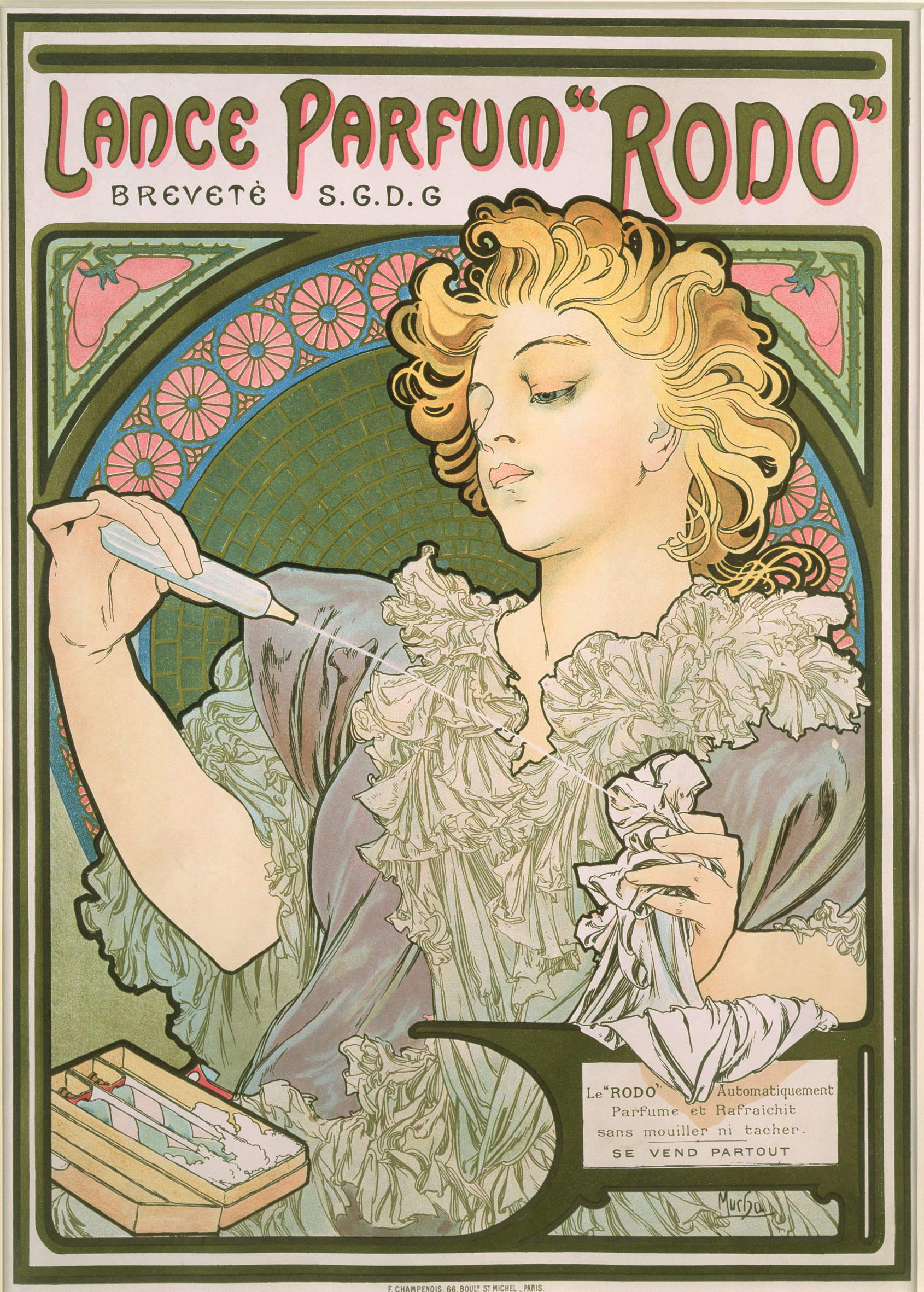

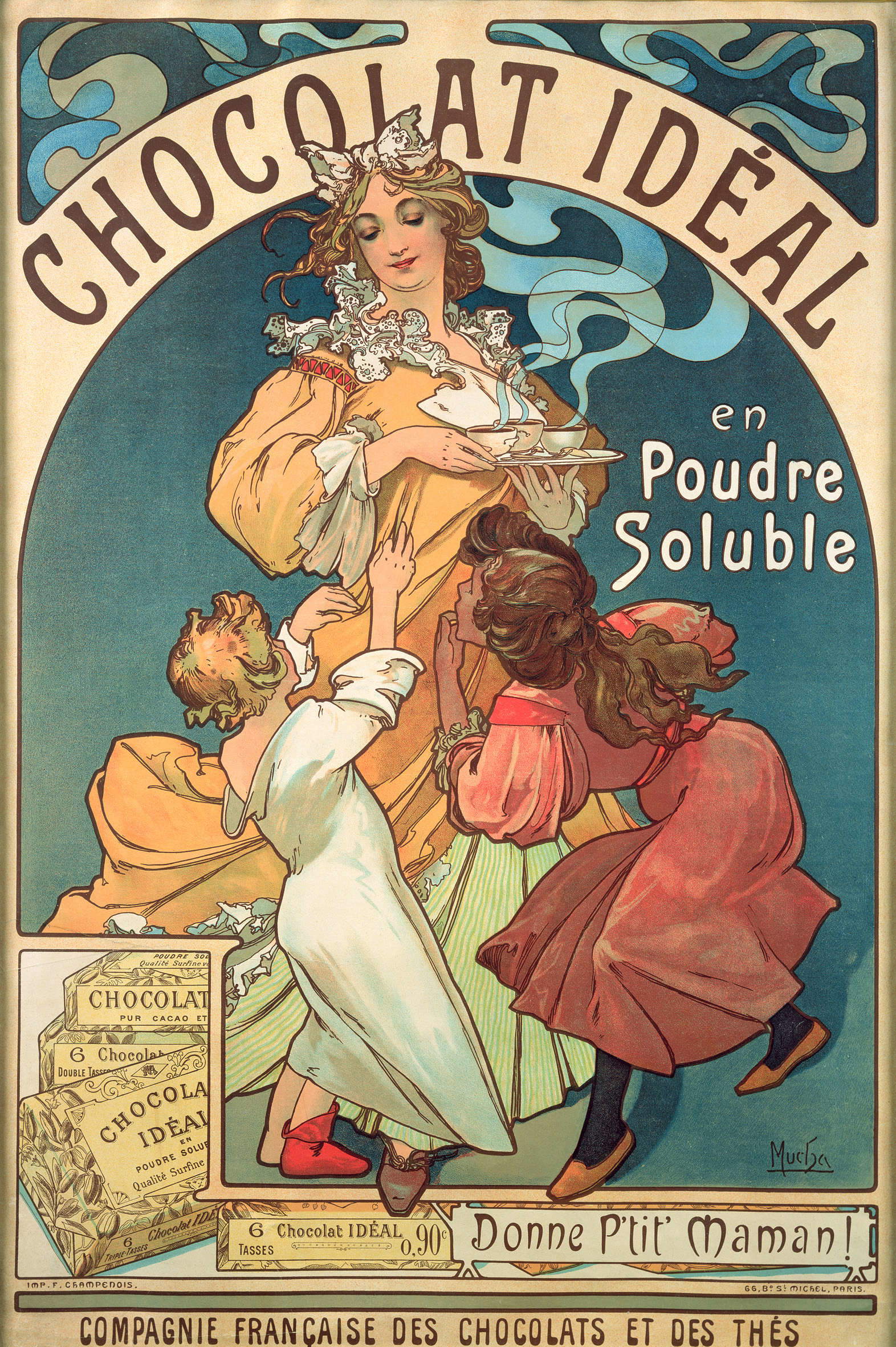
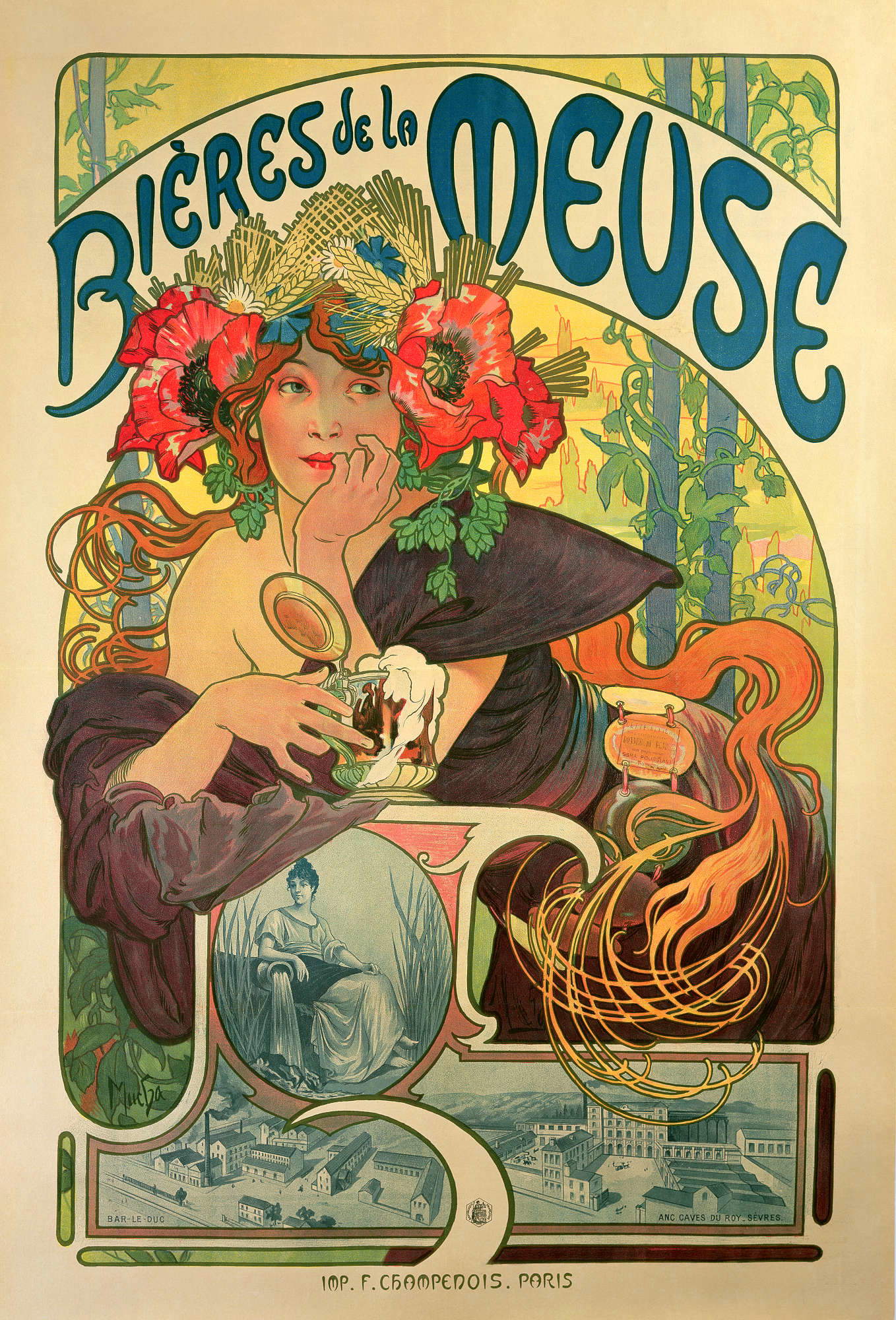
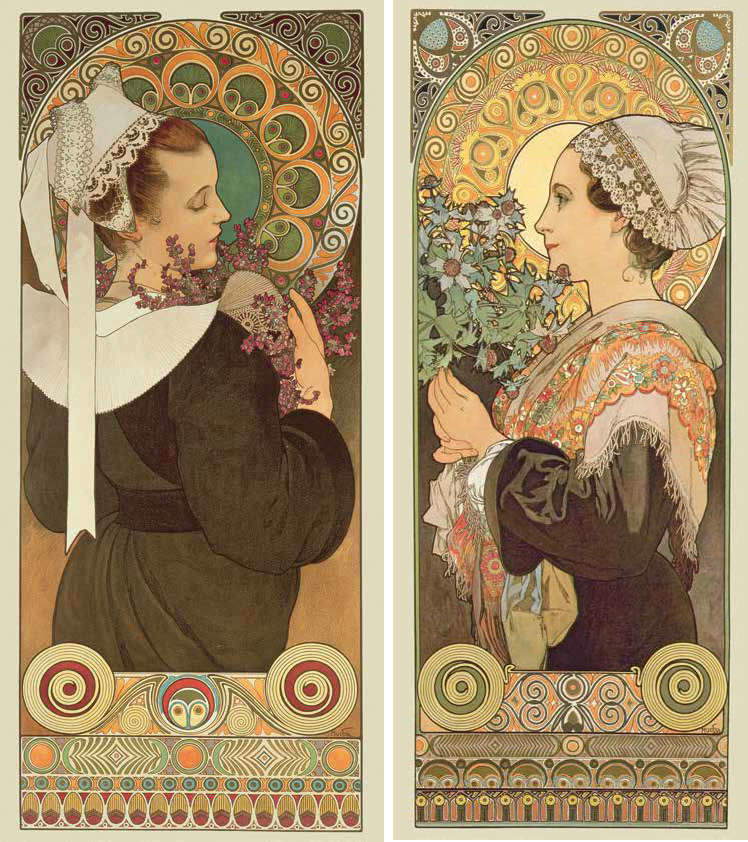
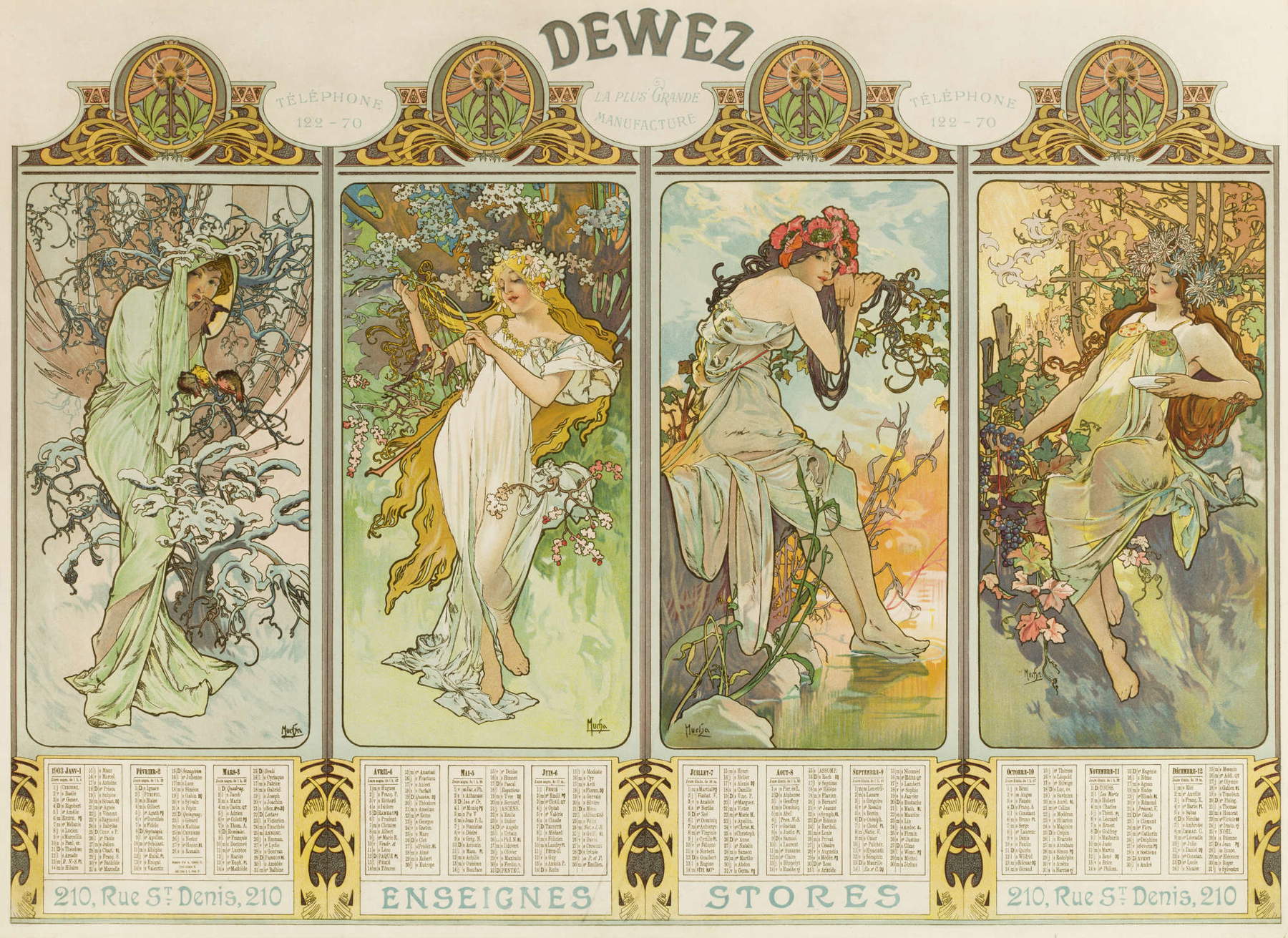
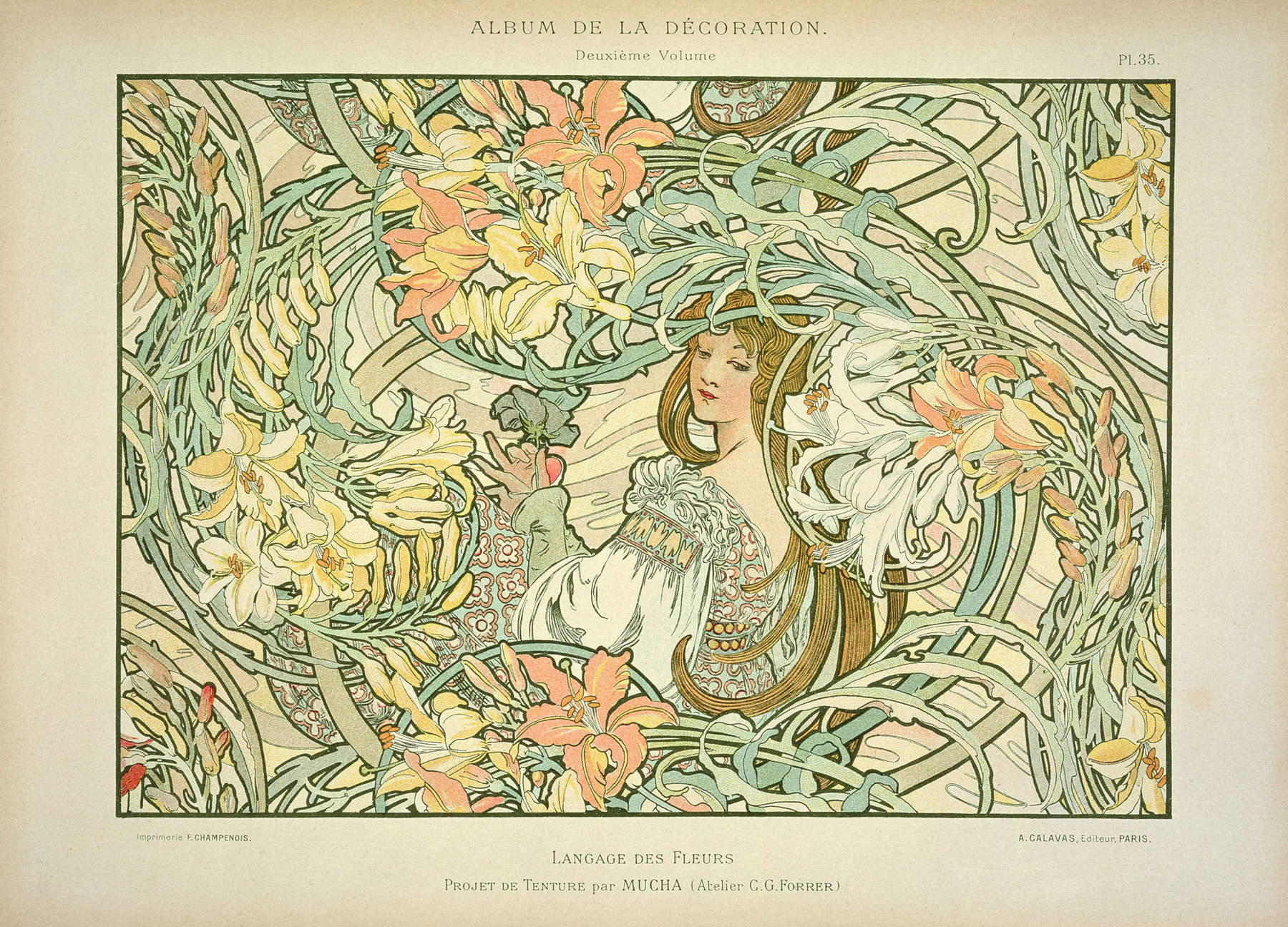
The exhibition closes with a chapter devoted toArt Nouveau in Italy, featuring sketches, paintings, vases, plates and panels by Galileo Chini, the man who in Italy grasped and experimented with the innovative and international spirit of Art Nouveau through the principles of Art Nouveau, albeit in his own personal style. One finds here graceful maidens with long fluttering hair, natural elements, flowers, but above all the idea of spreading beauty to all, making it accessible to all social strata.
This Italian focus section concludes the Florentine exhibition at the Museo degli Innocenti dedicated to Alphonse Mucha: an exhibition that takes the visitor through the themes of the famous Czech artist’s production, presented with many examples for each section, and where not possible, with documentary photographs. There is also an opportunity to learn about little-known aspects of an artist who became famous mainly for his advertising posters, such as his passion for Breton culture and the monumentalSlavic Epic cycle, always moved by an idea of art that can convey universal messages. To be visited by being transported by beauty.
Of the catalog, written in dual language (Italian-English), unfortunately the same cannot be said, as it adds nothing to the exhibition: there is only a general introduction by the curator and small introductions by her (except for the one in the last section written by Francesca Villanti) to the various sections. And the order of the works in the catalog does not faithfully reflect the order of the exhibition. Too bad.
Warning: the translation into English of the original Italian article was created using automatic tools. We undertake to review all articles, but we do not guarantee the total absence of inaccuracies in the translation due to the program. You can find the original by clicking on the ITA button. If you find any mistake,please contact us.